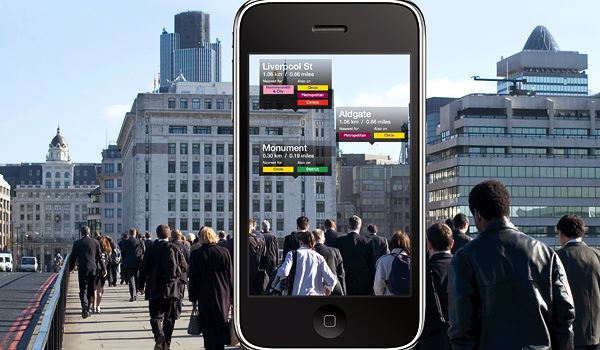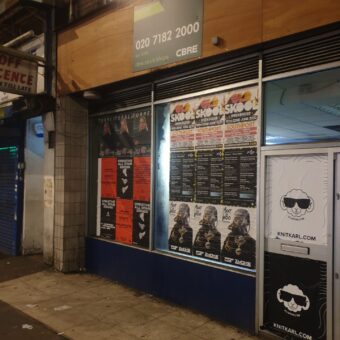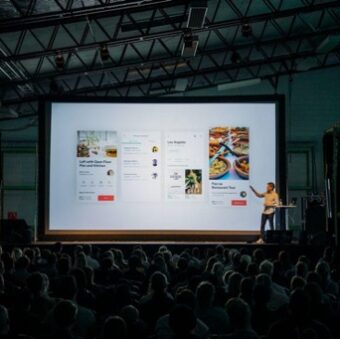How To Leverage Augmented Reality for the Marketing World
Augmented Reality Marketing
Many brands are now using Augmented reality (AR) for the promotion of new products and services. But is it going to survive in the marketing world in the near future? Here are some ways in which marketers can leverage AR in the marketing world.
Augmented reality is a concept in which the viewer’s surroundings are augmented with digital imagery and data related to the images. Augmented reality is not the direct goal of any marketing campaign but it aims to create an interactive experience for customer engagement.
#1 Role of Augmented Reality in Marketing
According to a research report released by Juniper Research, the concept of augmented reality in marketing through the medium of interactive mobile applications is set to generate 1.4 billion downloads by the year 2015 as brands are continuously reinventing their marketing strategy to explore AR possibilities. Brands like Acer and Volkswagen have utilised augmented reality for product presentation while Starbucks has recently used AR for messaging services. Domino’s Pizza has also leveraged to concept in UK for encouraging passersby to use their mobiles for learning about special deals on billboards and then order pizzas through their mobile app.
#2 Augmented Reality for a 3D Immersive Experience
Traditionally, marketers have always crafted strategies for different marketing channels. Augmented reality resides in the apps channel. It is important for marketers to focus on apps for creating 3D immersive experiences for clients and customers. Aligning augmented reality goals to meet client needs is important before investing in technological and human resources
For example, Audi used augmented reality experience to great effect. With the new Audi app, one can interact with images facing an Audi car, paint it and even get inside of it. One can even interact with the relevant car dashboard. It is essential for brands likewise to invest in development resources for creating augmented reality apps.
Image credit: Audi’s augmented reality
- A relevant strategy and the means to execute it is important at the first stage. One should set aside budget for creating interactive and immersive features of your experience
- Partner with adroit and experienced companies who specialise in the technology. Form relationships with them so that it is easier to execute your ideas.
#3 Use of Augmented Reality to Superimpose Points of Interest
With AR, every brand can stress on points of interest related to the product or service and even improve customer experience through mobile app.
Yelp, for example, created the first augmented reality app in 2009 which allowed users to use their phones as an interactive map of directions and several user-based reviews. The app allowed users to be immersed in a 3D-interactive experience wherein technology was utilized to improve the experience of its product or service. One should find ways to superimpose the brand in the store along with a relevant shopper marketing strategy.
#4 Experiment and innovate with AR and a sound marketing strategy
Augmented reality is no longer futuristic that many marketers might presume it to be. As it becomes more refined with time, the general public might come to expect the technology to feature with every app. By experimenting with it now, brands would not feel behind in a few years since they would have the first mover’s advantage too. Experimenting with AR does not mean that one needs to conceptualize future strategies at the drop of a hat and that the plans would work immediately.
New technologies that would impact marketing are going to be difficult to execute but ideas will slowly come to fruition. The right marketing strategy will come to you in time after you have run through several options that did not work.
#5 Leading brands need to do more with AR
Augmented reality forms an integral part of digital marketing through which many brands are reaching customers. Leading brands now stress on survival amidst strong competition from its rivals. For this reason, smart tactics for seamless connectivity are important to attract customers to their product or service. A stellar mobile strategy coupled with a smart marketing message can help the brands reach out to the masses, making the right impression.
Top 10 benefits once AR is leveraged for sales
Improves conversion rates and reduces returns for clothing stores for increased online conversion rate and reduced returns lead to an improved company’s profitability.
- Optimisation of warehouse space with improved navigation around territory
- Combined retail experience and e-commerce to stay closer and connected to customers
- Enhanced brand recognition with adroit customer engagement
- Better advertising campaigns which direct the user to product video, coupons and the like
- A 3D product preview which would work as a demonstration of the actual product.
- Additional information about products for better shopping experience
- Quick search for deals around by consumers.
- Strong visualization of product catalogs with a real-time, scale view avatar
- Creates curiosity in the minds of customers by entertaining them with AR-based tricks
Love Creative Marketing Agency is a guerrilla marketing and promotional staffing agency that works with brands and media agencies delivering below the line marketing campaigns. If you would like to discuss your next project call 0207 607 2568 or contact us







